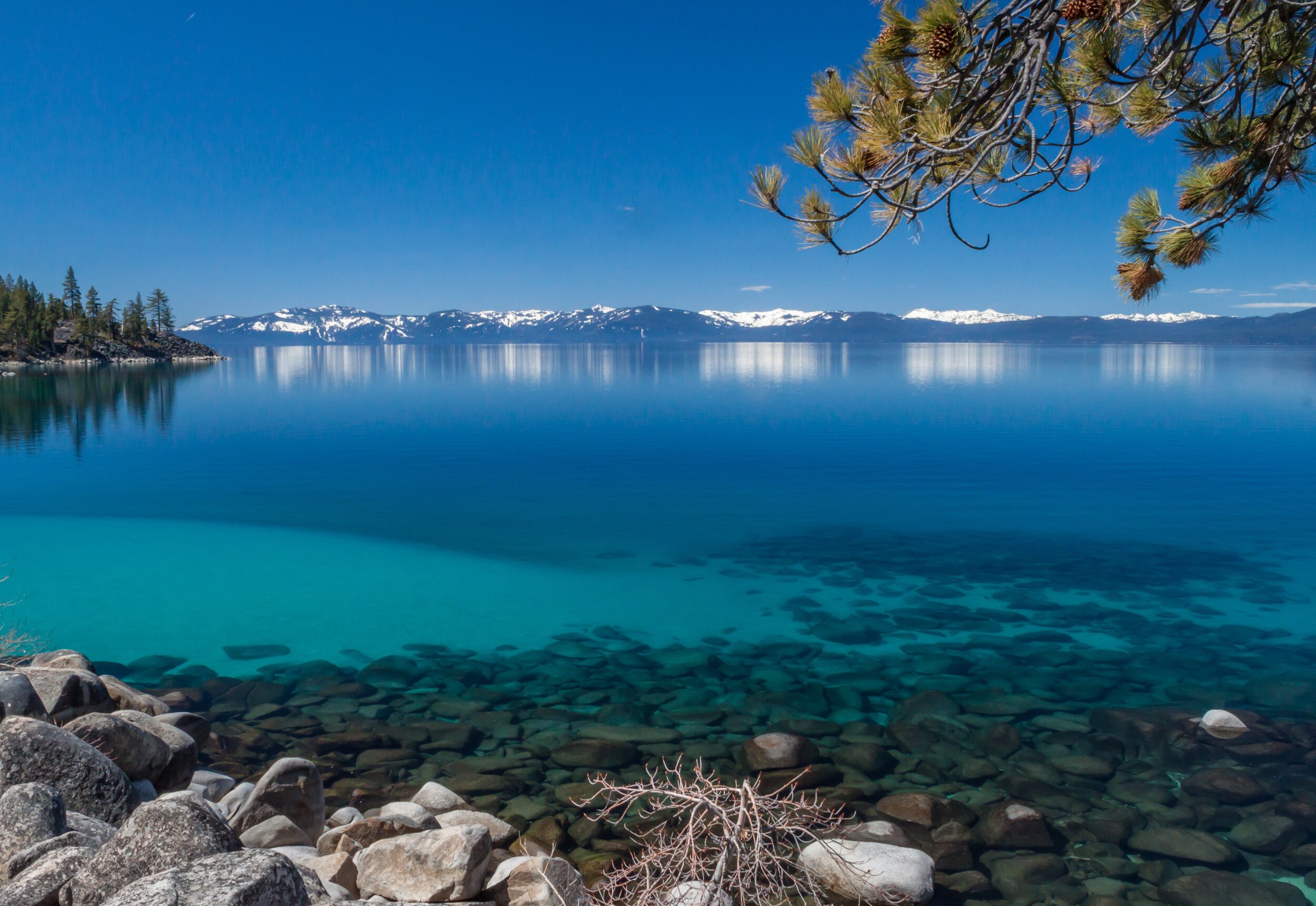
Lake Tahoe
A Rowing Paradise at 6,225 feet
Surrounded by snowcapped peaks and some of the best skiing in the United States, Lake Tahoe is America’s largest Alpine lake.
Lake Tahoe Dimensions
Length (North-South): 22 miles/35 kilometers
Width (East-West): 12 miles/19 kilometers
Shoreline: 72 miles/116 kilometers
Depth: 1,645 feet/501 meters
Surface Area: 216 square miles/490 square kilometers
Surface Elevation: 6,225 feet/1,897m
Volume: 36 cubic miles/150 cubic kilometers
Rowing on Lake Tahoe
Lake Tahoe is one of the best - and most overlooked - places in the world to row, with all kinds of conditions for all types of rowers. Some days are completely calm with no wind and water “as flat as glass.” Other days bring more challenging conditions, with wind and waves typical of Open Water or Coastal Rowing environments. The wind and weather at different locations around the lake can also result in very different conditions at the same time.
Meanwhile, the high elevation provides a unique opportunity for altitude training and competition. In fact, the men’s and women’s US national rowing teams trained on nearby Fallen Leaf Lake back in 2001, and the annual North Tahoe Regatta is the highest-elevation rowing competition in the United States.
Since the lake never freezes, it is possible to row year-round, although the cold water and harsh weather can significantly limit access in the winter months. Fortunately, there are almost twenty ski resorts in the Tahoe area, so those cold, snowy days won’t go to waste!
Fun Facts About the Lake
Lake Tahoe formed over two million years ago as a result of seismic activity.
It is the second-deepest lake in North America, after Crater Lake in Oregon (1,949 feet/594 meters)
Lake Tahoe’s water is extremely clear, with a mean clarity of around 70 feet/21 meters. It is the second-clearest lake in North America and the fifth-clearest lake in the world.
The water is also extremely pure: 99.994%, to be exact. That’s almost as pure as distilled water (99.998%). Several Tahoe communities draw their drinking water directly from the Lake without any filtration. (DRINK TAHOE TAP!)
The California/Nevada border goes through Lake Tahoe, with two-thirds of the lake in California and one-third of the lake in Nevada.
While Lake Tahoe has 63 tributaries, there is only one outlet: the Truckee River, which exits the lake at Tahoe City on the north shore.
Tahoe’s water never reaches the ocean. The Truckee river terminates at Pyramid Lake, which has no outlet. The water gradually evaporates.
Speaking of evaporation, approximately 330 million gallons of water evaporate from Lake Tahoe every day - that’s enough to supply the city of Los Angeles for FIVE YEARS!
Lake Tahoe is the sixth-largest lake by volume in the United States, after the five Great Lakes. If drained, its water would cover an area the size of the state of California at a depth of 14-1/2 inches/35.5 centimeters.
Due to its great volume and high surface-to-volume ratio, Lake Tahoe never freezes. Surface water temperature ranges from a low of 41 Fahrenheit/5 Celsius in the winter to as high as 68 Fahrenheit/20 Celsius in the summer. Below a depth of around 600 feet/185 meters, the water stays a constant 39 Fahrenheit/4 Celsius.
Despite its large size, there is only one island in Lake Tahoe - Fannette Island in Emerald Bay - and yes, you can row to it!
“As it lay there with the shadows of the mountains brilliantly photographed upon its still surface, I thought it must surely be the fairest picture the whole earth affords.”
— Mark Twain, Roughing It, 1871




